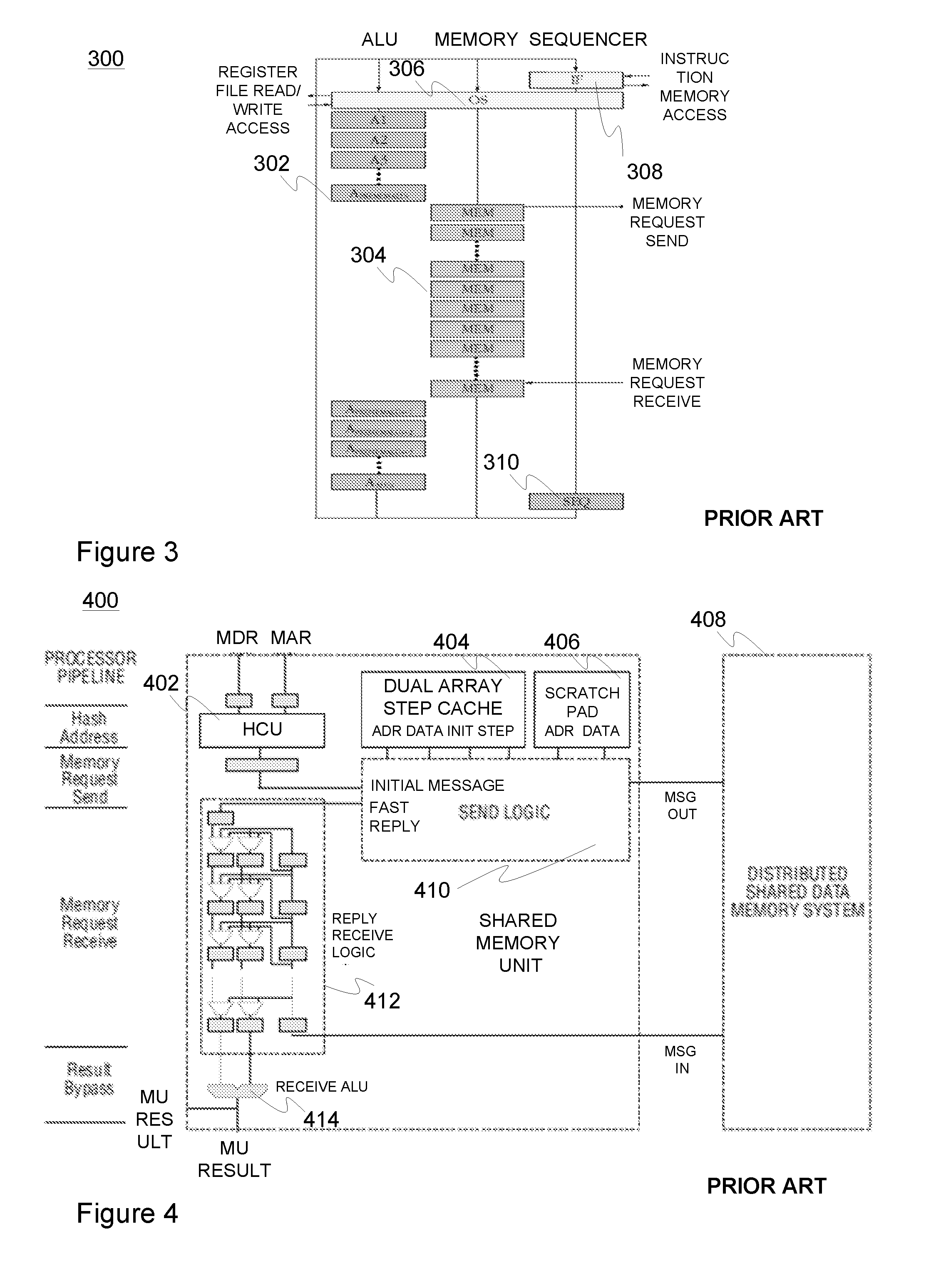Memory unit for emulated shared memory architectures
a shared memory and memory unit technology, applied in memory adressing/allocation/relocation, multi-programming arrangements, instruments, etc., can solve the problems of affecting the performance of communication intensive problems, and affecting the performance of caches, etc., to achieve the effect of improving memory access
- Summary
- Abstract
- Description
- Claims
- Application Information
AI Technical Summary
Benefits of technology
Problems solved by technology
Method used
Image
Examples
Embodiment Construction
[0058]The memory unit (MU) in accordance with an embodiment of the present invention may be generally utilized in connection with an ESM computer architecture to implement e.g. CMP (chip multiprocessor) or MP-SOC (multiprocessor system on chip) system comprising a plurality of processor cores with dedicated instruction memories, associative step caches (retaining data inserted therein until the end of on-going step of multithreaded execution as managed by step-aware replacement policy) and non-associative (thread-addressed) scratchpad buffers attached to processors, and a physically distributed but logically shared data memory coupled via a high-bandwidth network such as a multi-mesh interconnection network to the processors (cores). The network connects processors to distributed memory modules so that sufficient throughput and tolerable latency can be achieved for random communication patterns with a high enough probability.
[0059]To maximize the throughput for read intensive portio...
PUM
 Login to View More
Login to View More Abstract
Description
Claims
Application Information
 Login to View More
Login to View More - R&D
- Intellectual Property
- Life Sciences
- Materials
- Tech Scout
- Unparalleled Data Quality
- Higher Quality Content
- 60% Fewer Hallucinations
Browse by: Latest US Patents, China's latest patents, Technical Efficacy Thesaurus, Application Domain, Technology Topic, Popular Technical Reports.
© 2025 PatSnap. All rights reserved.Legal|Privacy policy|Modern Slavery Act Transparency Statement|Sitemap|About US| Contact US: help@patsnap.com



